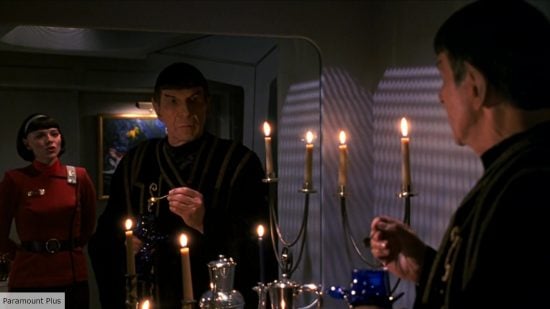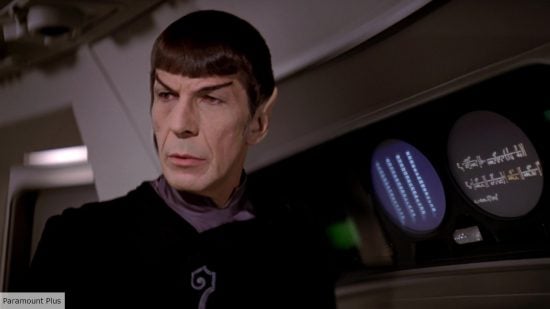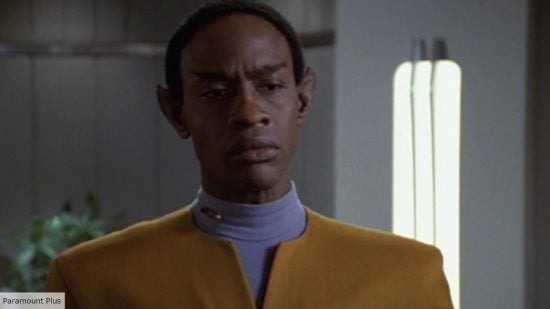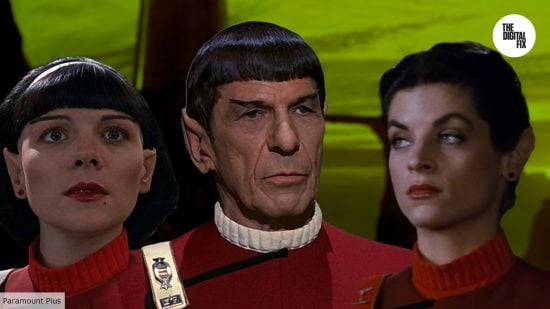What are the Vulcans in Star Trek? Even more so than the Klingons, Borg, or Romulans, Star Trek’s Vulcans are absolutely integral to the franchise and have been since the very beginning, both in-universe and out of it.
In fact, part of Star Trek‘s enduring popularity is all down to one of the best Star Trek characters ever: the (half-)Vulcan, Spock. In the decades since his introduction, we’ve learned so much more about Vulcan lore through new Star Trek series and movies. Now, as Vulcan experts, we’ve collated the answers to all your questions in one handy place.
What are Vulcans, and where do they come from?
Vulcans are a highly advanced humanoid species native to the planet Vulcan in the Alpha Quadrant.
Their planet Vulcan (renamed in the 32nd century to Ni’Var) is known for its towering statues, red hues, rocky cliff faces, and arid environment.

As one of the founding members of The Federation, the Vulcans wield enormous influence across the Alpha Quadrant shaping the direction of the fate of the galaxy. In fact, it was the Vulcans who made first contact with the humans (as seen in the events of First Contact, certainly the best of the TNG-era Star Trek movies) after Zefram Cochrane successfully developed functioning warp drive technology in the year 2063.
Since then, Vulcans have formed a positive relationship with humans and other members of The Federation, and many Vulcan individuals can be seen serving in Starfleet (Starfleet even has entirely Vulcan-manned ships). However, further ahead in the Star Trek timeline after the events of The Burn as depicted in Discovery, Vulcans withdrew from intergalactic affairs though ultimately rejoined The Federation with help from Michael Burnham and co.

Vulcan logic explained
Despite being known as cold and emotionless devotees of logic, Vulcans are actually an extraordinarily emotional, intense, and volatile species that use logic in order to suppress this natural state and gain control over themselves in search of truth.
This deference to the philosophy of logic, therefore, is one of the overarching traits of Vulcans and Vulcan society as a whole. Vulcans place a great emphasis on the virtues of meditation, and other reflective rituals, which they use to connect with logic and navigate their challenges.
Since birth, they are conditioned to control their emotions and set them aside in favor of logic, and the ultimate goal for a Vulcan is to undergo the Kolinahr: a symbolic ritual to purge all remaining emotions once a sufficient level of logical adherence has been achieved.
While Vulcans believe this to benefit their lives on an individual and personal level, the origin of their philosophy has much broader roots. Prior to finding logic, Vulcans were are warlike and aggressive species with a tumultuous and violent history defined by an unending cycle of conflict caused by their explosive emotions.
Devoting themselves to logic allowed them to prevent their feelings from clouding their judgment and perception of what was true: in turn, Vulcan society found peace, and logic became the central tenet of their philosophy.

Vulcan biology explained
Vulcan biology is one of the most fascinating aspects of the species because it differs so vastly from human biology despite their exterior similarities.
On a superficial level, Vulcans are identifiable by their pointed ears, upward-angled eyebrows, and (mostly) straight, dark hair. While they’re approximately the same height as humans, they’re also three times as strong and possess vastly superior reaction times. That makes Vulcans even more physically intimidating than Klingons (though Data would still be able to take one on in a fight).
If you do manage to make one bleed though, you’ll find Vulcan blood to be green rather than red due to the oxidation of the copper in their blood (rather than the iron in human blood, which turns red when exposed to air).

Having evolved on their harsh, hot home planet, Vulcans are adapted to survival which means they can endure high temperatures, a lack of water, and a lack of sleep far better than any human. They also beat humans when it comes to their age with their enormously extended lifespans: an average member of the species will live for 200 years or more.

Notable Vulcans throughout Star Trek history
From Chief Science Officers to the Heads of Security, Vulcans have had a diverse array of roles in Star Trek, and a few in particular have established themselves as being especially noteworthy within the canon.
The first and most obvious is Spock, alongside his father Sarek, and his brother Sybok. The whole family had a significant impact on the affairs of the galaxy, as seen throughout the stories of TOS, Strange New Worlds, the TOS movies, and even TNG.
Sticking with the theme, there’s also Spock’s fiancée T’Pring, whose betrayal of Spock (re-contextualized in Strange New Worlds to make her a much more sympathetic character) nearly resulted in the death of Kirk.

In the TOS movies, Spock was joined by the iconic Saavik and Valeris: two of his proteges. Since then, other notable Vulcans have been integral to the adventures seen in other Star Trek series, with T’Pol in Enterprise, Tuvok in Voyager, and T’Lyn in Lower Decks.
None are quite as iconic as Spock, though Tuvok probably comes closest. The character (Chief Security and Tactical Officer) is one of the best in Voyager where he serves as Janeway’s closest adviser and confidant, and the third in command just behind Chakotay. He even showed up again in Picard season 3 to promote his former Kal-toh adversary Seven of Nine.

And that’s just about it for everything you need to know about Star Trek’s Vulcans. For more Star Trek lore, see our guide to the Borg and the history of the USS Enterprise. You can also see our thoughts on the best way to watch the Star Trek movies in order and see what else is new on Paramount Plus other than Star Trek, before swapping franchises and seeing what’s going on with Avatar 3 and the new Star Wars movies.
